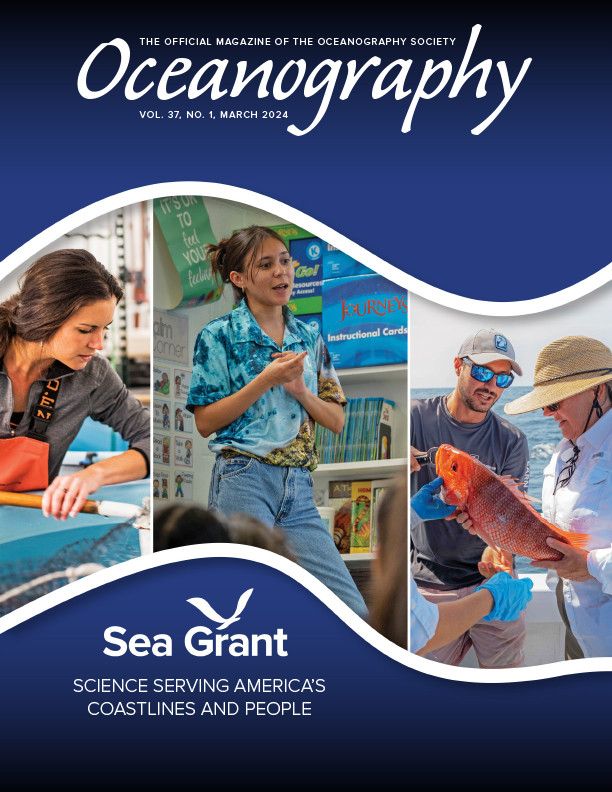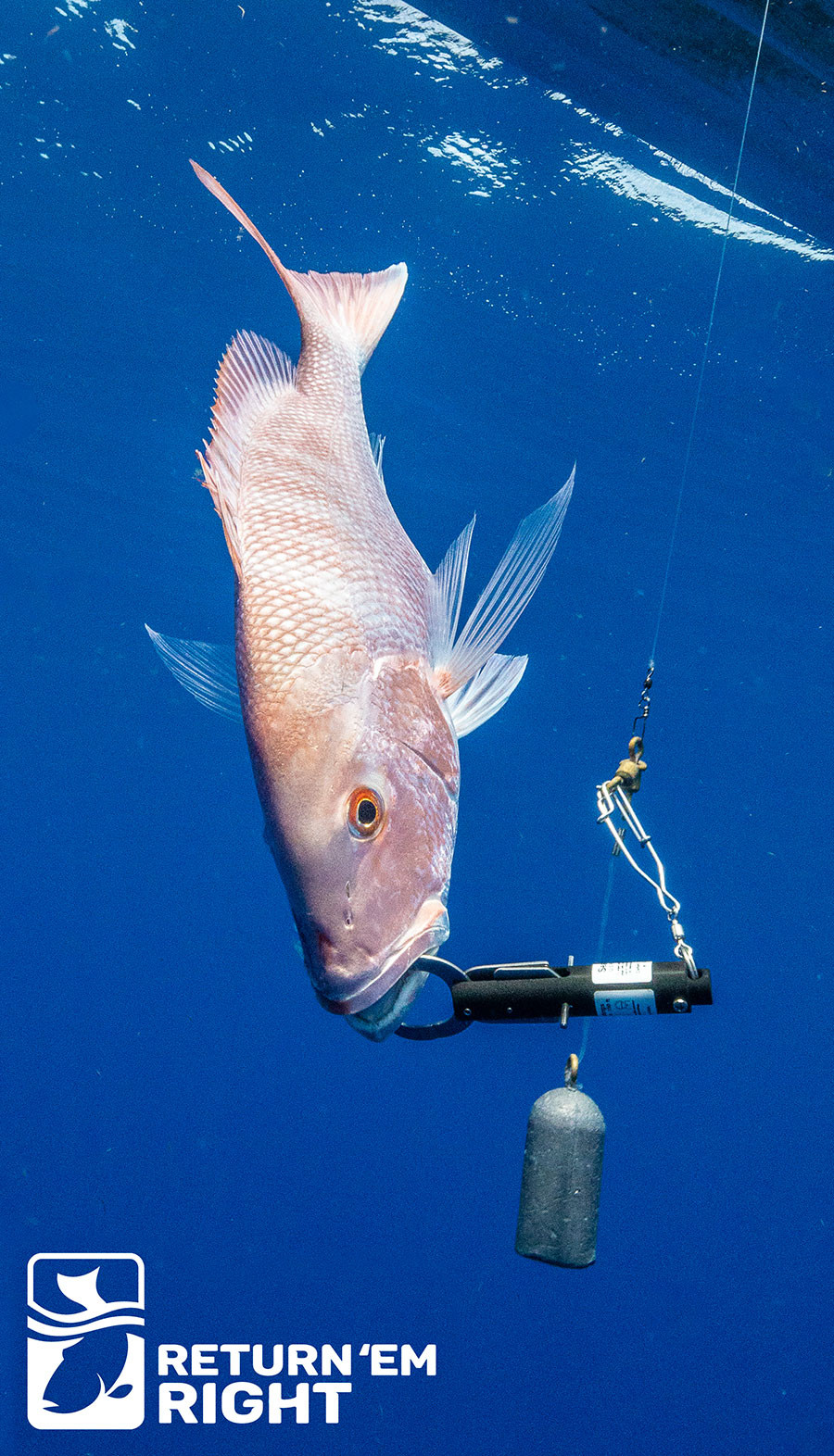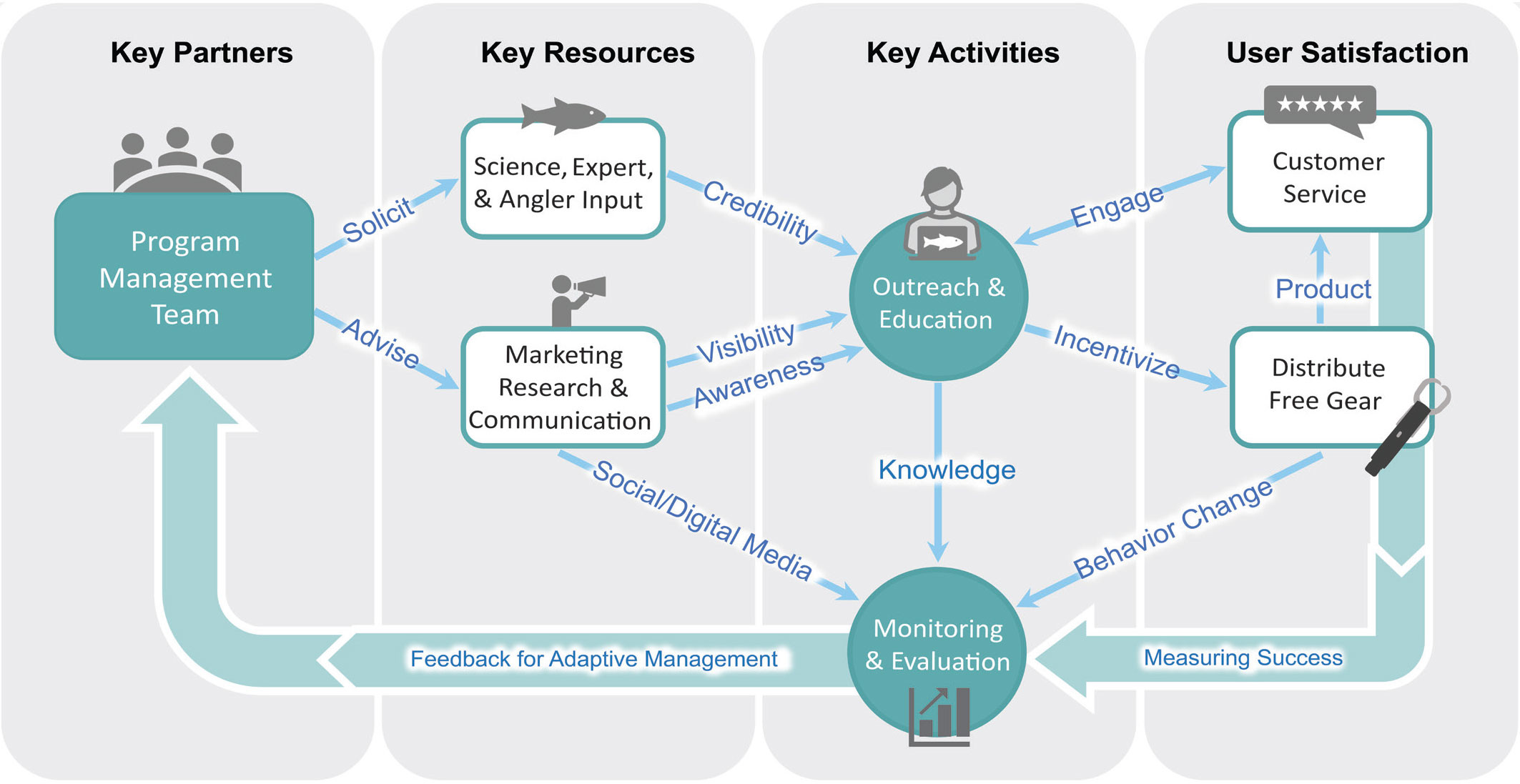Full Text
“Return ’Em Right” (https://returnemright.org/) is a unique program that blends science with business principles and can serve as a model for resource-user-driven ocean conservation. The effort, led by the NOAA Restoration Center, in collaboration with Florida Sea Grant and the Gulf States Marine Fisheries Commission, emphasizes clientele interests, customer service, and the angler experience to motivate sustainable catch and release practices among recreational fishers in the Gulf of Mexico. Return ’Em Right delivers practical and relatable information to the angling community by blending traditional science, outreach, and communications with modern social marketing. These activities are underpinned by innovative online learning tied to the distribution of free fish-descending devices to tens of thousands of participating anglers. Issue awareness, knowledge, and use of the devices to release fish exhibiting signs of barotrauma safely back to depth is monitored and evaluated through customer satisfaction surveys.
Barotrauma describes injuries caused by the expansion of gases in a fish’s body when reeled up from depth. Upon release, barotrauma can lead to high post-release mortality rates, including increased opportunities for predation (Rummer and Bennet, 2005; Campbell et al., 2010). Symptoms of barotrauma can be recognized and treated by experienced anglers. However, the proper use of commercially available release tools—such as venting and fish-descending devices—to mitigate the effects of barotrauma, is less common. The highly popular recreational targeting of reef fish that can be affected by barotrauma presented an opportunity to implement a resource-user-driven program to instill lasting conservation practices into the culture of offshore fishing.
How The Program Works
Return ’Em Right is directed by a program management team (PMT) that has broad experience engaging with anglers. The PMT synergizes the activities of education, marketing, and communications, which are underpinned by the distribution of free fish-descending gear developed by industry partner SeaQualizer (Figure 1). Educational programming from an online learning platform, developed using the Articulate Rise 360 application, introduces the condition of barotrauma, illustrates its visible manifestations in fish, and presents tools and techniques to mitigate it. Neutral and independent branding appeals to anglers’ passion for fishing and their desire to sustain the resources they cherish. The program’s name and logo invoke a sense of responsibility among anglers to “return ’em right” so that anglers and fish alike can “earn another fight.” Messaging is delivered via familiar outlets that include social media, fishing magazines, and fishing TV shows. The cultivation of prominent social media influencers who represent the offshore angling community extends the reach and value of complementary educational programming in the form of a short 15-minute online training that describes what fishers should know about recognizing and mitigating barotrauma. User satisfaction with the programming and gear is monitored though customer service and follow-up surveys. Feedback from participating anglers is used by the PMT to refine and expand educational programming and delivery of free fish-descending gear to anglers. Figure 2 illustrates the operational flow of information, programming feedbacks, and benefits among key partners, resources, and activities.
|
|
|
|
Factors Contributing to Program Success
NEUTRAL: Impartial, nonregulatory, and science-based programming fosters trust among stakeholders and target audiences. A key component of program growth and acceptance among the offshore fishing community can be attributed to its neutral branding and nonregulatory perspective. The development of a logo, a website, apparel, and social media to deliver education and outreach promotes Return ’Em Right as a standalone entity that serves as a trusted resource for fisheries conservation. The program benefits from Sea Grant’s long history of supporting science-based outreach as it provides a neutral, nonregulatory body in the fisheries and coastal resource conservation space.
RELATABLE: Identifying with industry and stakeholders promotes program reach and value. Return ’Em Right is guided by anglers and grounded in science. Working with key influencers, charter captains, and champions contributes to the program’s credibility and appeal among the angling community.
PERSONAL: Appealing to the interests of end users, delivered through positive messages, inspires desired attitudes and behaviors, driven by personalized customer service. A novel web-learning platform (https://returnemright.org/about-us/gear-signup/) emphasizes what anglers need to know and is supported by individualized customer service that is accessible, responsive and relatable. The following participant comment illustrates this point: “I can’t tell you how important it is for someone to pick up the phone when there is a question, talk to a real person, and interact with fishermen as fellow human beings.”
CREDIBLE: Science-based and data-driven visualization tools create transparency and trust among program stakeholders and partners, supporting program integrity among target audiences. An innovative data monitoring dashboard utilizing ArcGIS technology was developed to evaluate educational programming usage, marketing metrics, and the geographic distribution of program participants. Metrics indicate significant customer satisfaction, application of knowledge through use of the gear, and broad transmission of information among anglers, promoting program growth. The dashboard provides essential information to inform PMT decision-making and adaptive management.
Building and Maintaining the Return ’Em Right Community
Feedback from half of the 30,000 participating anglers indicates that Return ’Em Right is benefiting from brand visibility, motivating issue awareness, and increasing knowledge of barotrauma and the correct use of tools to mitigate the condition. The strategy for maintaining active longer-term engagement with saltwater anglers and growing the Return ’Em Right community involves (1) creating additional training videos for the program website that address aspects of catch and release angling voiced by existing clientele; (2) engaging with the program’s community through gear giveaways, monthly e-newsletters, and social media; (3) planning future virtual catch and release fishing tournaments to further document use of fish-descending gear; (4) cultivating new industry, nongovernmental organization, and agency partnerships; and (5) licensing the Return ’Em Right brand and exploring expansion of the program to other regions. Growing interest among partners and feedback from participants suggests that the program can be a model for inspiring stakeholders to take an active and lasting role in ocean resource conservation.



